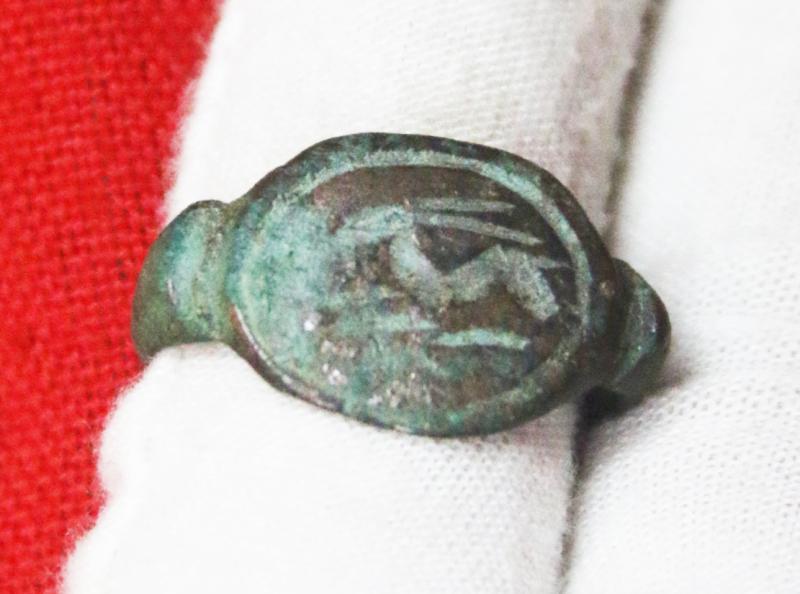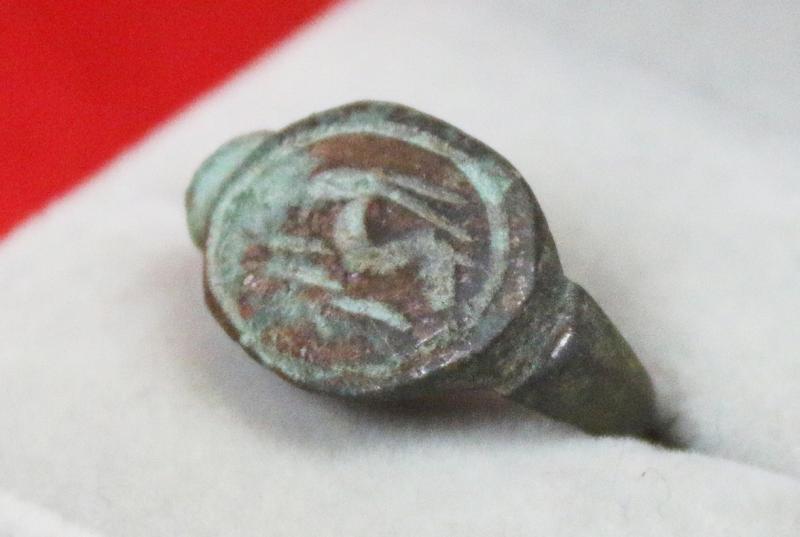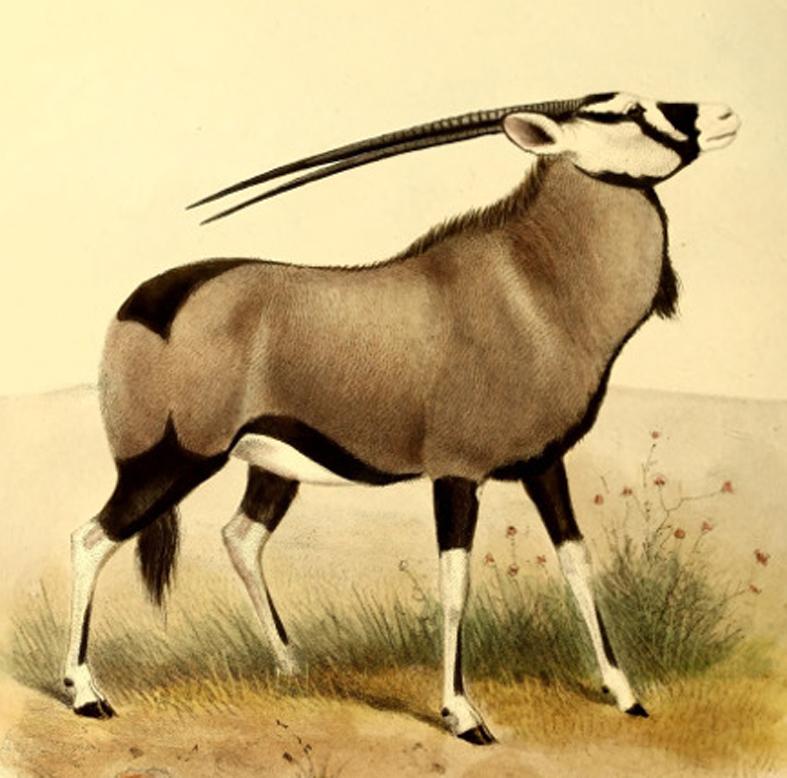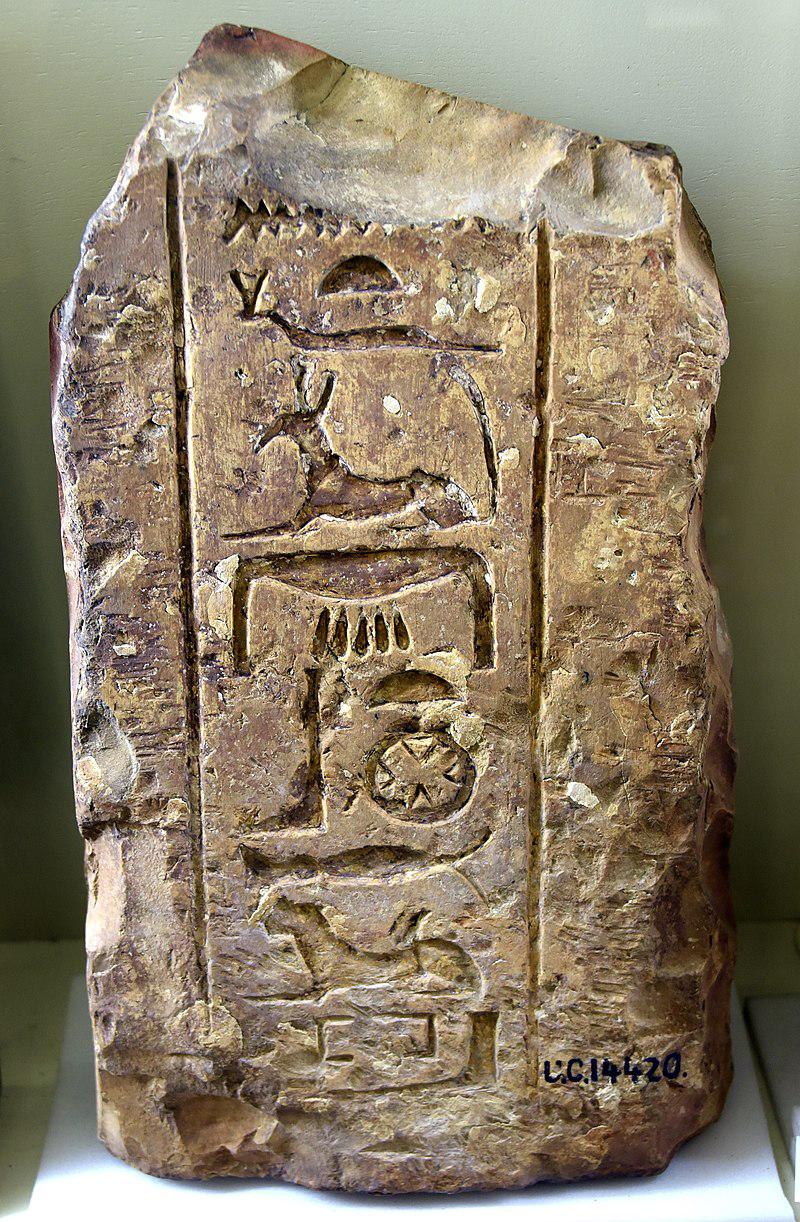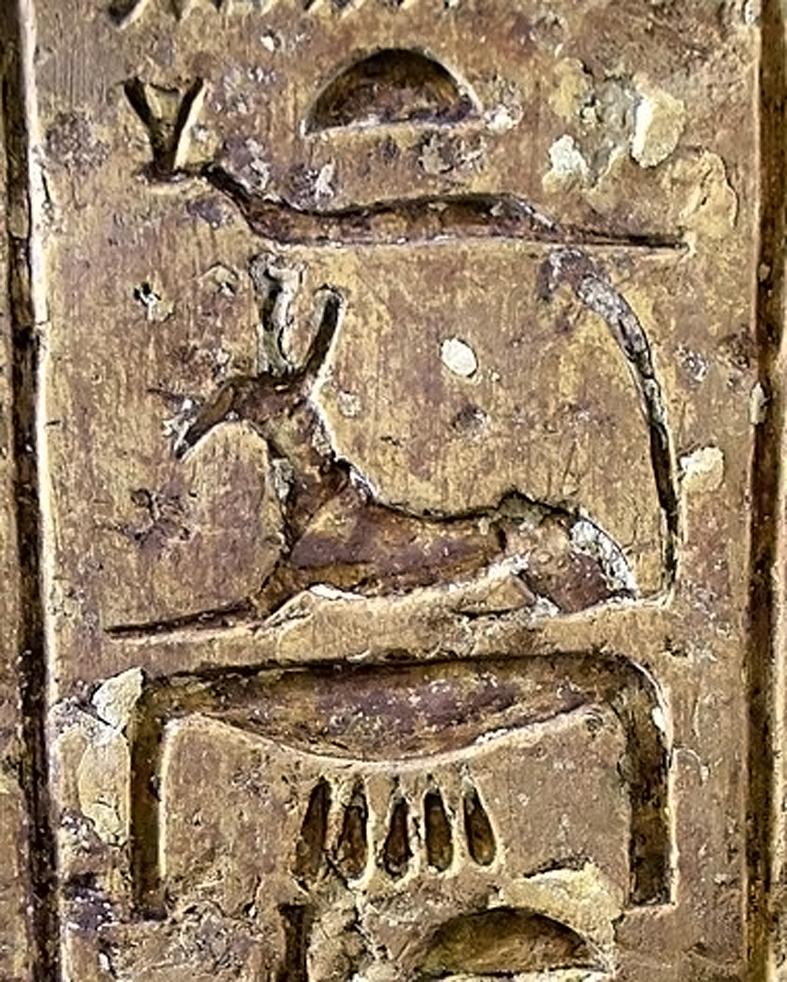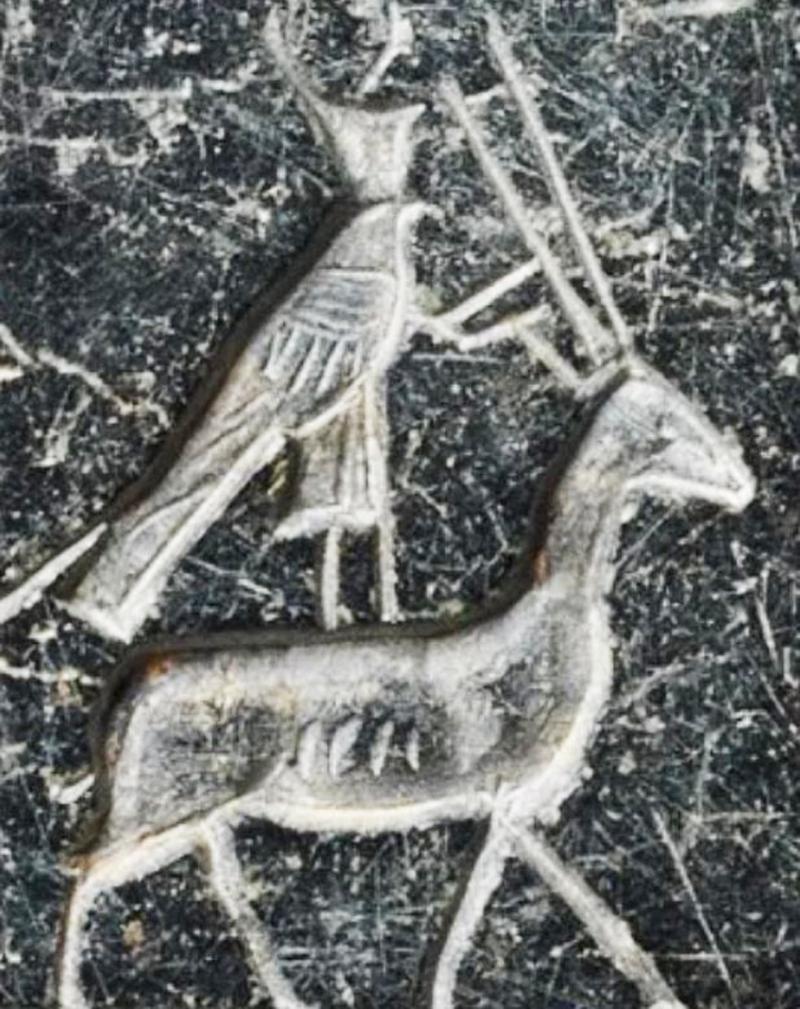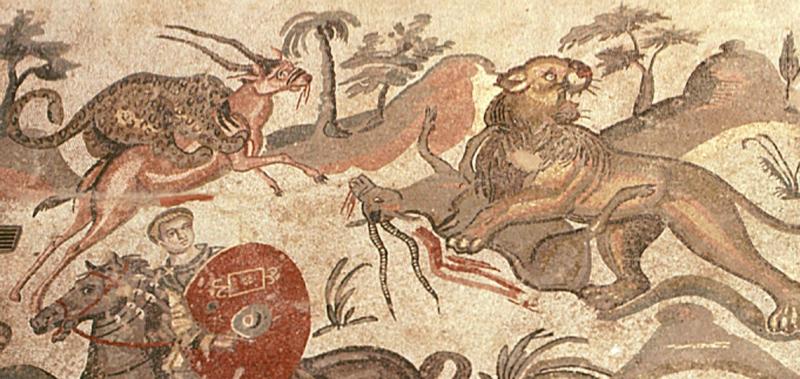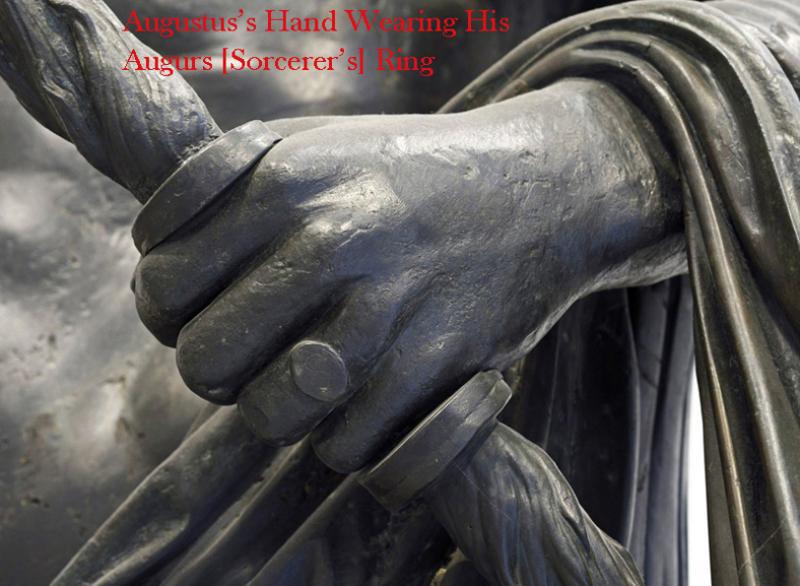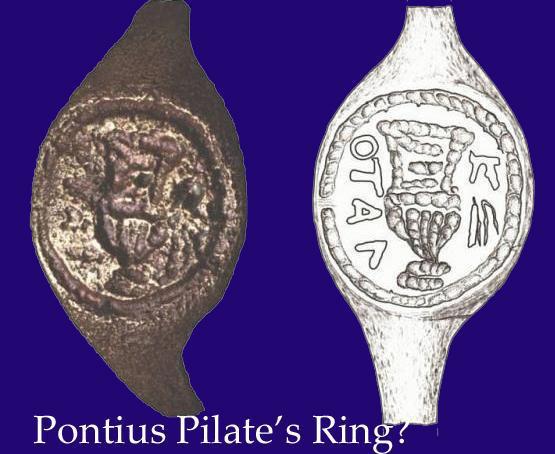A Stunning Ancient Roman Ist Century AD, Galloping Oryx Intaglio Engraved Bronze 'Status' Seal Ring.
Henig type Xb bronze Roman ring around 1900 years old. In copper bronze with great, natural age patination. Beautifully carved intaglio seal detail of an oryx in full flight.
From a small collection of British recovered original Roman rings, all in excavated condition, found in the 19th century from the same location. Examples of this type can be found in Henig, M. (1974) A corpus of engraved gemstones from British Sites, British Archaeological Reports 8 (II): 90.
The oryx has a most interesting history through ancient times, firstly representing the image of the Egyptian God Set, Ancient Egyptian god and patron of the 11th province, of Upper Egypt. A trickster, he was a sky god, lord of the desert, and master of storms, disorder, and warfare. He was the brother of Osiris, whom he killed, and he was antagonistic to Horus, the child of Osiris’s sister, Isis. Seth’s cult largely died out in the 1st millennium BC, and he was gradually ousted from the Egyptian pantheon. He was later regarded as entirely evil and identified as a god of the Persians and other invaders of Egypt.and later as the likely source in the earliest mistaken translations of the Bible as the unicorn of mythology.
Depictions of this magical and beautiful animal have been found on ancient seals, Egyptian Greek and Roman, and early Greek writers believed the unicorn originated from India. Re’em is the Hebrew name for oryx, but the Jewish ancient scholars were confused by the descriptions in the Old Testament. The original Jewish texts mention nothing about the animals horns, but the King's scribe chose, despite this, to call the animal monoceros, which can be translated into "a horn" singular. The translation was continued when the Jewish texts became the Old Testament. The Bible mentions the unicorn seven times
The engraved intaglio seal ring was important for displaying the Roman's status. For example Tiberius, who was after all left-handed according to Suetonius, thus displays a ring in his bronze portrait as the Pontifex Maximus: The complete Roman Empire had around a 60 million population and a census more perfect than many parts of the world (to collect taxes, of course) but identification was still quite difficult and aggravated even more because there were a maximum of 17 men names and the women received the name of the family in feminine and a number (Prima for First, Secunda for Second…). A lot of people had the same exact name.
So the Roman proved the citizenship by inscribing themselves (or the slaves when they freed them) in the census, usually accompanied with two witnesses. Roman inscribed in the census were citizens and used an iron or bronze ring to prove it. With Augustus, those that could prove a wealth of more than 400,000 sesterces were part of a privileged class called Equites (knights) that came from the original nobles that could afford a horse. The Equites were middle-high class and wore a bronze or gold ring to prove it, with the famous Angusticlavia (a tunic with an expensive red-purple twin line). Senators (those with a wealth of more than 1,000,000 sesterces) also used the gold ring and the Laticlave, a broad band of purple in the tunic.
So the rings were very important to tell from a glimpse of eye if a traveller was a citizen, an equites or a senator, or legionary. People sealed and signed letters with the rings and its falsification could bring death.
The fugitive slaves didn’t have rings but iron collars with texts like “If found, return me to X” which also helped to recognise them. The domesticus slaves (the ones that lived in houses) didn’t wore the collar but sometimes were marked. A ring discovered 50 years ago is now believed to possibly be the ring of Pontius Pilate himself, and it was the same copper-bronze form ring as is this one.
Limestone architectural fragment; a door jamb, part of a doorway. From the temple of Set (which was built by Thutmosis III) at Ombos, Egypt. 18th Dynasty. The Petrie Museum
Every single item from The Lanes Armoury is accompanied by our unique Certificate of Authenticity. Part of our continued dedication to maintain the standards forged by us over the past 100 years of our family’s trading
Code: 25137
395.00 GBP


